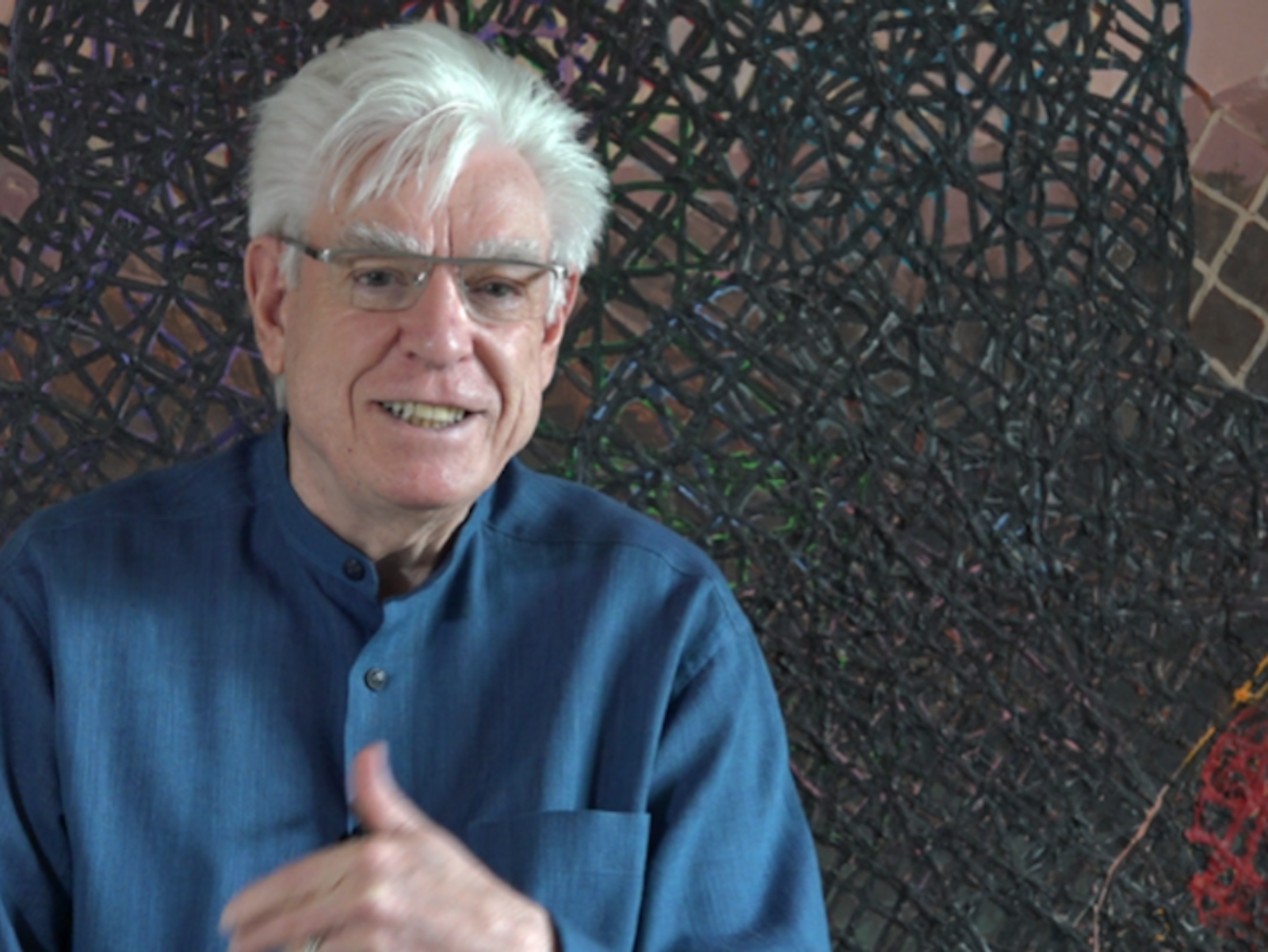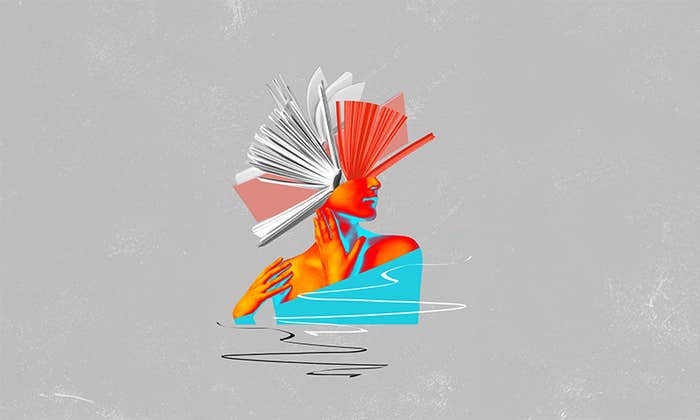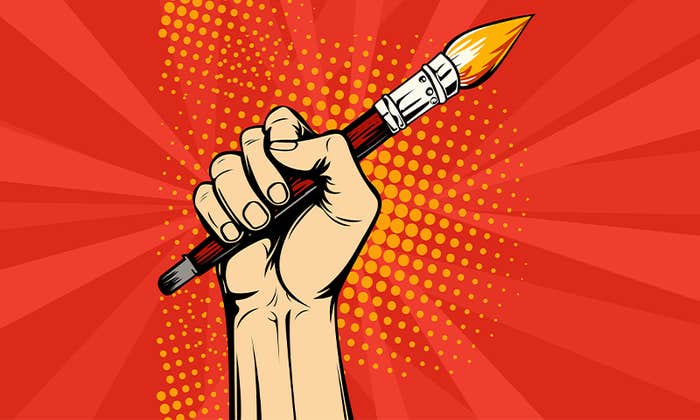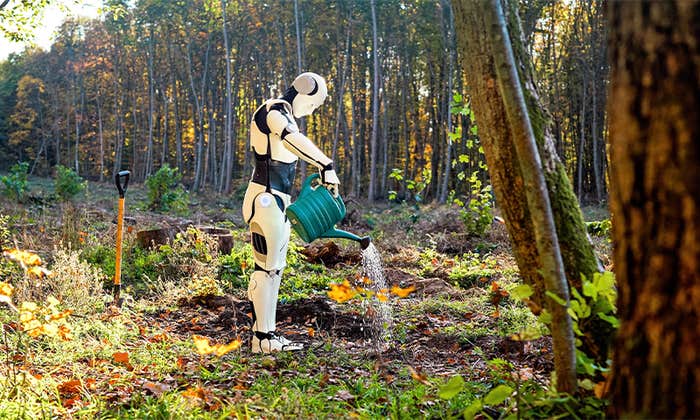Richard Loveless believes trans-disciplinary collaborations can inspire creativity and pioneer new ways of thinking. That’s why, in 1991, he became the founding Director of the Institute for Studies in the Arts, a premiere arts research group in the College of Fine Arts at Arizona State University. During his nine-year tenure, he’s funded over 200 projects in an array of art forms that emphasized collaborative innovation with experts from architecture, engineering, and all the sciences. The goal was to extend artists’ visionary capacities and scholarly abilities into wider spheres of influence in the future.
For example, in a 1991 study—made public by the first of Bill Moyers’ documentary series, “Healing and the Mind”—Loveless brought together Denis Calandra, a theatre director at the University of South Florida interested in alternative forms of theatre performance, and Nicholas Hall, a psycho-neuro-immunologist, also at USF, researching multiple personality disorders (now called Dissociative Identity Disorder). The study explored how the mind and body are linked in expressions of thoughts, feelings, and behavior by conducting metabolic blood studies of two actors in two different but equally emotionally charged plays. The results showed that people in performances exhibit the same underlying physical fluctuations that multiple personality individuals do. “It really changed the whole way they train multiples and treated them during that time,” says Loveless.
Loveless’ work—a half-century of rethinking education—has led to the development of many symbiotic relationships and hybrid university degree programs that harness collective wisdom. “I want everyone in the collaborative group to be different from everyone else,” he says. “They bring to the whole process a unique quality of mind that nobody else has.”
I spoke with Loveless, now 80, last year, in his inspiring work environment in Sedona, Arizona, where he continues to mentor an international cadre of educators and students in matters of innovation and the art of multidisciplinary collaboration.
What have you done that has transformed how the arts are taught?
Being so fortunate, I think, to have lived in the last hundred years, we’ve had access to more change than in any other generation in the history of human beings. The real challenge has been to adjust and adapt to that change and then how to—I never use the word “train”—to educate artists to think of other kinds of ways of becoming engaged in art besides the old, individual, go-it-alone practice. Some artists in the ‘60s just totally rejected the whole idea that there was another way of thinking about art practice. So the kinds of things I did then had to be designed to interact with people in other fields—science and engineering and medicine and anthropology and all that. Meantime, the artists thought I was crazy.
How did you develop your new curriculum?
My early life was involved in music and theater and the visual arts, so even in my graduate work at Penn State, I did a thesis formed around a four-year practice of studying the relationships between all of the arts, and that became, later on—when I was one of the fine arts coordinators for the state of Pennsylvania—a new curriculum for secondary schools. This was all round the time of Sputnik, when the arts were disappearing in the schools but the humanities were flowering, and I didn’t feel like the humanities really were doing much.
How did you begin to transform creative activity to what it is today?
I really believe, and have all my professional life, that we all evolve through root experiences. Those are things that happen to us at certain points along the way, from birth until yesterday, and they seem to be the things that link together the way we take chances with our ideas and the way we evolve our thinking about art. I’d like to give you four or five examples of that for myself and then challenge anyone watching this video to make their own list of root experiences, because if you haven’t done it, then you really are not clear about your direction in life. It’s just the way it is.
When I was in fifth grade this teacher was teaching a science lesson about astronomy, and she made the statement that “the sky never ends.” She was just so set on our saying this back to her—“the sky never ends, the sky never ends, the sky never ends”—and at some point I looked at her and said, “Well, how do you know the sky never ends when you don’t know where it begins?” I was sent to the principal’s office and thrown out of the science class. Fifth grade. Later on, I was in a little conversation with Marshall McLuhan, and I’m not name dropping, but we were talking because I brought him from Canada down to Florida where I was, and he was writing at that time, and he said the day that Sputnik was shot up into the sky the Earth turned into an art object. That was another root experience for me.
Later on, in another project I was working on with Bucky Fuller, he made the clear observation that the Earth is a spaceship, “Spaceship Earth,” and that the future of all of our inhabitants—and habitation on the earth—would be determined by people who would give up the idea of being a specialist and become a generalist. That was a root experience for me. Later, or earlier, I’m not sure when, I was at MIT doing consulting work with a group of people who were running science centers—the Exploratorium, the Boston Children’s Museum, the science museum outside of Canada, Toronto. They were all talking to us as artists to see what we did at community art centers that caused all the kids to flock to the art centers; but if they had a science center, the kids wouldn’t show up that often.
That’s all changed now, but these were the heads of four of the biggest, best science centers at the time. And Philip Morrison, the astrophysicist, who was leading the group, looked at me after three or four days and said, “You haven’t been saying much.” I thought about it and then I said, “Well, you know, you all have been sitting here for three days now talking about how you explore worlds larger than ours and how you explore worlds smaller than ours. And I just wonder if you think about the fact that when you look through those lenses, whatever you’re observing is looking back at you.” That evolved into a book that Philip and his wife wrote, called Small Science.
That was a root experience. But he said something more important at that point, which really, really struck a responsive chord: He said, “There’s only three significant components to a scientific experience”—remember this is an astrophysicist talking—“The first component is the aesthetic. One has to be, through perceptual experience, just totally opened to some whole new way of recognizing the universe. The second is that new concept arrives, that’s part two. And part three is, you have to change your mind in the act of doing something.” Root experience? Well, yes, he was talking about scientists but I thought, Geez, all the artists I know do that too. What’s the difference?
What did you see as the problems you were addressing?
One of the biggest things to overcome in the universities was that people didn’t talk to each other. People in science didn’t talk to arts. People in engineering didn’t talk to science. It was just the whole “silo effect” of everybody being preordained to live and work in one specific area, and then the whole system of rewards for tenures and promotions reside in their ability to follow the traditional conventional pathway of scholarship.
You’ve often said that leadership is the primary catalyst for successful collaborations. Can you elaborate on how good leadership makes this happen?
The most important thing is to decide whether you’re going to fund the collaboration and go do all the work of getting the individuals assembled to make that work. Assembling individuals that are needed to populate a collaboration are always negotiated between the individual who had the idea, the person proposing the research, and then recognizing the talents that are needed for other kinds of work and what kind of individuals you have access to that have those talents. Any good institution, like the ones that I operated in, have already an in-house group of technical and other kinds of support people so that they can be plugged into different collaborations whenever it calls for that. Things to avoid: Do not rely on the person who originated the idea to lead. One of the things that destroys so many collaborations is people don’t always have the ability to choose the right people to collaborate with, and if you leave it up to them alone, most often you’ll find they’ll choose people who reinforce their weaknesses rather than complement their strengths.
How do you integrate collaborators into the process?
I avoid thinking about any collaborators as peers, because in the real sense of the word “peer,” it means you’re picking people who are good at the same things you are. They have the same linguistic environment. They make the same choices, and so I eliminate the idea of peers. I want everyone in the collaborative group to be different from everyone else, and they’re there because of that difference. They bring to the whole process a unique quality of mind that nobody else has. What my role is, if I’m leading the collaboration, is to orchestrate the poetry of all of those differences—to get them all to fly in one direction toward the idea, even when not knowing what the outcome will be.
What are some other important facets of collaborative partnerships?
Not considering a collaborative group as a family. That’s one of the things I’ve learned over years of doing collaborations. The family model is as dysfunctional as most families are, so I try to stay away from that from the very beginning. All collaborations are not successful for a number of reasons, and so we should learn from those failures to improve on the way we develop and start new collaborations.
To do that, I did a nine-year study with a colleague, a friend, who was head of family counseling at Albert Einstein Hospital in New York, but was also a conceptual artist, retired. I hired him as a human being in residence to come at his leisure, any time he chose, to engage in observations about the collaborations we were doing. He could intervene if there was an issue, of people at war with each other for any reason, but what he did for me, at the end of each month, is tell me what we were doing to each other. That was a huge insight into how to form future collaborations and how to avoid some of the classic mistakes of how you put them together. That culminated in a publication called “The Art and Psychology of Creative Collaboration,” and we used those ideas with healthcare professionals for the Einstein Hospital in their summer training programs in Provincetown, and guess what? Good models of artistic collaborations fed right into the problems they were having collaborating in healthcare communities. It didn’t matter what the diversity was of any particular collaboration.
If you could put together a team to solve the world’s problems, who would you choose?
Dyson [Freeman Dyson, physicist and mathematician] with Philip Morrison from MIT, who’s of course passed. They were like astrophysicists in the analogue and digital world—totally different intergenerational forms of wisdom. My whole team would be an intergenerational group, and the oldest could be 90 and the youngest could be 19. Every memorable—I have a list here of what I thought were some of the best research collaborations we did—one of those had intergenerational wisdom, from teenagers to 70, 80-year-old participants. You know the old idea that the older you are and the more experienced you are, the more intelligent you are, and so you always go to the old, more wiser? Baloney. It’s gone. Margaret Mead suggested this in the ‘60s, when I was in graduate school. She talked about it as co-figurative and pre-figurative cultures, and she said in the future it will be no longer feasible for the old to teach the young, and we all thought, What about that? Well, she was so right, you can’t even think about it. So collaborations have to involve older people, wise in their own ways, who are open to listening to people in their 30s.
What was the first project you completed when starting your institute at Arizona State University?
I was coming in from a university in Florida, and I wanted to create one of the first collaborations, to show by example what kinds of things were possible. I had started doing some of this in Florida before I left. I had Denis Calandra, Theater Director and Chair of Theatre at the University of South Florida and Dr. Nicholas Hall, Immunologist and Director of Research in Mental Health in the College of Medicine at the University of South Florida. Hall was working with multiple personality disorders, had a whole group of them. For some reason or other we ended up at Berkley; we’d been invited over there, not a birthday, but a Christmas celebration or something, and all of these multiples are at the party, and I notice this one woman just going around changing personalities. I heard she had 20 different personalities. I said, “Well, is she switching personalities or not?” He said “No, not really here she’s not.” So I looked at Denis, the theater director, and said we have an idea here. Let’s see if we can find out what happens physically to people when they change personalities, and of course the immunologist said, “Jesus, you know, that’s what all research is about.”
I’ve been working with rats and now I’m working with these people, and we got to figure this out. Simplified, we had the feeling that when they changed personalities, that showed up in their immune system and their metabolic system. And then the question became: Can an actor in a performance create the same interactions with their metabolic and immune systems in the act of performance, and then turn it off when the performance is over? So Denis, the director, got an actor and an actress and we started this at ASU. We created two 30-minute plays. One was a Russian revolutionary play called It’s Cold Wonder It’s Cold, about a very sad experience of a woman going into jail to confront the man who killed her husband. Just heavy with emotion and anger and all that sort of thing. Then we used a Desi Arnez and Lucille Ball 30-minute funny thing, and you could probably remember this, the Veta-Vita Megamin.
We did metabolic studies of them through blood exams for six weeks. We did the performances back-to-back eleven days in a row, but flipped them and measured blood after every performance. We had to work with phlebotomists—saved the blood, froze it, mailed it back to Florida to a lab, and guess what? About six months later we looked at the blood and presented it to a big panel of immunologists in Washington to show that people in performance do this all the time. Then they set out to try to train people with multiples to choose those qualities that made it more accessible to live in the world as opposed to the disruptive qualities that caused them to be strangers in a normal universe. It really changed the whole way they train multiples and treated them during that time.
Can you talk about pioneering a transdisciplinary program?
That, to me, means someone in one discipline and another and another come together to create another discipline that doesn’t exist. And, at that time, we had some people, a man in nanotechnology who was an international scholar in science and—besides being at the forefront of nanotechnology at Cornell, he was also a consultant for major art museums around the world—invited me over to his house for dinner one night. He said, “I have some guests—why don’t you come over?” And I said okay, and when I got there the conservator for the Louvre was there, the conservator for the Getty museum was there, the conservator for the New York Metropolitan Museum was there, and they were all talking about how to use technology to look beneath the surface of paintings, to resume conservation and all that sort of stuff. It was a guy like him, Jimmy Maher, flying into the room one day and saying I want to do a research thing, showing everyone how you look beneath the surface of a painting, and they said well, it’s kind of interesting, but what if we did something that was more imaginative about that?
We brought an architect in from Cornell and a visual artist and this guy Jimmy Maher, and we set up a museum exhibition where individual participants can enter the space of a mock painting on a wall. They moved and performed in an infrared camera, which created an interaction between them and the subjects of the painting, and where they interfered with the interference patterns, they created layers of painting behind them. And when people come up on the stage and did that, we had a machine over here making a photograph, which—this sounds very complicated—but we had an XYZ camera going while they were in there and we photographed them in little serial modules so that when they walked off the stage, and went over to the machine, they had an image of themselves interacting in the history of these paintings behind them. Then we had a gallery of all the different people going through, and it we did it in a public setting in the Phoenix Museum. We had gangs and all kinds of groups come in there and do these performances in front of this thing just so they could have a photograph of it. And we came back two nights later and they had made t-shirts with them. So again, the whole idea is how do you take an idea that somebody thinks is really good and find another way to collaborate with others?
You speak of the concepts of ‘reform’ versus ‘reformulate.’ What’s the difference between those ideas?
What goes on in research is based on the idea that you can reform something that’s already there. One of the things I’ve learned so much from Paolo Soleri is that any time you try to reform something all you get is a better kind of wrongness. That the key is to reformulate. You want to reformulate the city? Well, reformulating the concept of “habitat” is reformulating, making over a city is just making over another bad city.
Were you reformulating creativity by putting together teams of collaborators?
Innovation happens when you reformulate what already exists and what everybody does alike, repeats, replicates, and that ties into one of the other questions you had about putting collaborations together. I think this might be a better way of thinking about it.
Does the collaborative mind change the meaning of genius?
I don’t really think it changes the meaning of “genius,” if someone really believes they know what that is. I don’t know what that means. What I do know is that in a good collaboration, there is an incredible leader, and you might say for that specific project they were the genius or they were the one that had the most insightful question to ask about how to do something. The collective wisdom of the group emerges through the idea of collaboration, and the outcome changes everybody.
How do we educate artists in the future?
The last project they did before I retired was the one with Eduardo Kac, that created a big symposium around the idea of the ethics of transgenic research—working with other animals and species. That was the last thing I did, a big exhibition and a symposium of people from around the world, and I published a book about that and walked away. The next thing the university did was undergraduate, masters, and PhD programs—hybrid programs—where all students from undergraduate to graduate can get a degree in multiple disciplines anywhere in the university. But one has to be in the arts, one has to be in engineering, and then anywhere else. The college of fine arts and the college of architecture and urban design were dissolved. They’re gone. It’s now called the Herberger Institute for Design and the Arts for Digital Culture. So every class, every course in the former areas of art, music, theater, dance, film, and architecture, are redesigned, and the top of the title of each class is called digital culture, blah-blah-blah. So that changed over time with the blessings of a president who had that mentality anyhow.
What have you learned from bringing all these different disciplines together?
I would just say that I’ve become a more open person; that I’ve been able to cast aside some of the stereotypical ideas I had about being an artist, and I certainly changed what I thought the quality of outcomes should be when you participate as an artist in a collaborative model. When I was working, directing the institutes, I made a point of being a part of collaborations—at least one or two each year—so I wasn’t just up in the management area trying to orchestrate all the stuff that was happening all over the world with some of these projects. I learned an importance in the difference between being on the outside and observing a collaboration, and being on the inside, and that’s what Mel, Roman, and I did when we developed that art and psychology of creative collaboration. For three years we watched what they did to each other. The second three years we changed the way they formed, the way they were managed, and the way the outcomes were done, and the third set of three years we both participated in two collaborations each, so we saw in the inside what was happening that we could only observe in the outside.
Gayil Nalls, PhD, is a New York based interdisciplinary artist and theorist. Follow her on Twitter @olfacticinkblot and @themassinglab.


























